As a Korean American, I am fascinated to see the craze over all things Korean. From K-Pop to Kia, Samsung to Hyundai, it has become cool to Korean. One of the fastest growing trends that helps perpetuate the growing love for Korea are Korean BBQ restaurants.
What is KBBQ you ask?
KBBQ is a method of cooking meat over a charcoal or propane grill. The meats are cut and marinated traditional Korean style, and are brought out raw to be grilled at the table. Most KBBQ restaurants are all you can eat and allow you to select from an extensive list the type of meat you want to devour. In this list I will go over ten items you should try at you next (or first) KBBQ visit.
10. Bulgogi
Bulgogi is by far the most popular meat to get at KBBQ. Bulgogi is a thinly sliced sirloin or tenderloin cut of beef that has been marinated traditional Korean style. The marinade varies from restaurant to restaurant, just like standard BBQ from the American South can vary in taste. The marinade used in Bulgogi includes, but is in no way limited to, soy sauce, sugar, sesame oil and garlic. This is an absolute must when going to KBBQ.
9. Galbi
Similar to Bulgogi, Galbi is an essential KBBQ dish. Galbi is a short rib cut of beef marinated in a similar style as Bulgogi. Galbi is most popular in places that offer a charcoal fire to cook. This is because the Korean traditional method of cooking Galbi involves using the charcoal from a specific tree in Korea, giving the meat a dense flavor and adding to the dining experience. Truth be told, any way you cook at it, Galbi is another staple in the KBBQ experience.
8. Bul-Dak or Dakgogi
Bul-Dak is a spicy chicken dish and one of my personal favorites. It usually comes bright red and that's perfectly normal. The bright red is the marinade and spices used to prepare the chicken. And it does look much spicier than it actually is. The chicken generally takes twice as long to cook as the beef plates, so I would recommend saving this until the end of one of the many rounds of ordering food.
7. Chadolbaegi
This dish is unmarinated brisket. The thin slices create the curling of the meat, which will unravel when placed on the grill. Because the meat is unmarinated, it is usually served with a side dipping sauce. This sauce contains sesame oil, salt and pepper. Be advised, the thin slices cook almost instantly and need to be watched, otherwise burning is likely to occur. Take it from me, I know.
6. Deungsim
Carnivores are likely to know this next meat dish. It is a thick-cut sirloin steak. It is not a marinated steak, but comes pre-seasoned with salt, pepper and sometimes garlic. It is meant to be shared with the table by cutting it up while it is cooking. However, I find that I usually eat the whole steak by myself. Though it is not the most popular cut when going to KBBQ, it is one of my favorites.
5. Samgyeopsal
Samgyeopsal is grilled pork belly which comes in a thick cut, usually quarter-inch thick slices. Yup, it's essentially just really thick bacon. Just think of it as Korean bacon. It usually comes unmarinated, but there are versions of it that use a similar marinade as Bulgogi, giving it a sweeter taste. I personally like it unmarinated and unseasoned.
4. Saewu
Saewu is shrimp, and shrimp, along with most other foods from the sea, are integral to the diet of many Koreans. Because Korea is a peninsula, they rely on the sea. The fishing industry in Korea is one of its largest. So naturally, when going to KBBQ, expect there to be some seafood.
Shrimp is an unpopular dish at KBBQ because many find it to either be a mystery to cook or too difficult to eat. When shrimp is raw, it is grey. When fully cooked, it will appear bright pink on both sides. The outer shell may begin to burn, indicating that the shrimp is thoroughly cooked. The quickest way to remove the shell of the shrimp is to either pull off its head (gross, I know), place the prong of a fork between the meat and the shell or pull apart as if you were opening a pair of scissors and voila, shrimp meat!
3. Ojinguh
Continuing on our seafood journey, we come to one of my favorites to cook, fried squid. When delivered to the table, the squid has been cleaned, gutted and cut and comes without seasoning. Sometimes you can ask for spicy squid which comes marinated in spices. Cooking squid is similar to cooking shrimp. It will become lighter in color, and when both sides are cooked thoroughly, it should begin to blacken. This means it is ready to come off the grill.
Warning: Cooking squid is not for the faint of heart. Tentacles have a tendency to move while cooking because of the heat, not because it is alive. Also, when cooking the head of the squid, it is not uncommon for it to move around the grill. Again, not because it is alive, but because of the residual water in the meat boiling out.
2. Banchan
Banchan is the Korean word for the smaller dishes that come out with the meal. These dishes can include pickled onions and radishes, Korean potato salad, kimchi, cucumber kimchi, pickled bean sprouts, rice and soup. The Banchan is set around the table and is to be shared by everyone.
One common piece of etiquette regarding sharing Banchan is that your utensil is clean of food before reaching for more. Banchan is a great way to add new and different flavors to the types of meat you will be cooking. Personally, I like to have kimchi with everything I eat, so I know that I will have to ask the server often for more sides of kimchi.
1. Try something out of your comfort zone
Try, try, try new things when you are at Korean BBQ. Why? Because that is how you grow. That is how you are able to figure out what you like and what you don't like. Be willing to go outside of your comfort zone and explore new frontiers in the world of food.
I know, this isn't some new venture you are taking, like a new job or a trip to a foreign country, but it is still an opportunity to grow and to expand your horizons. So why not give it a try with food? Be bold, and I guarantee you that you won't be disappointed for trying.


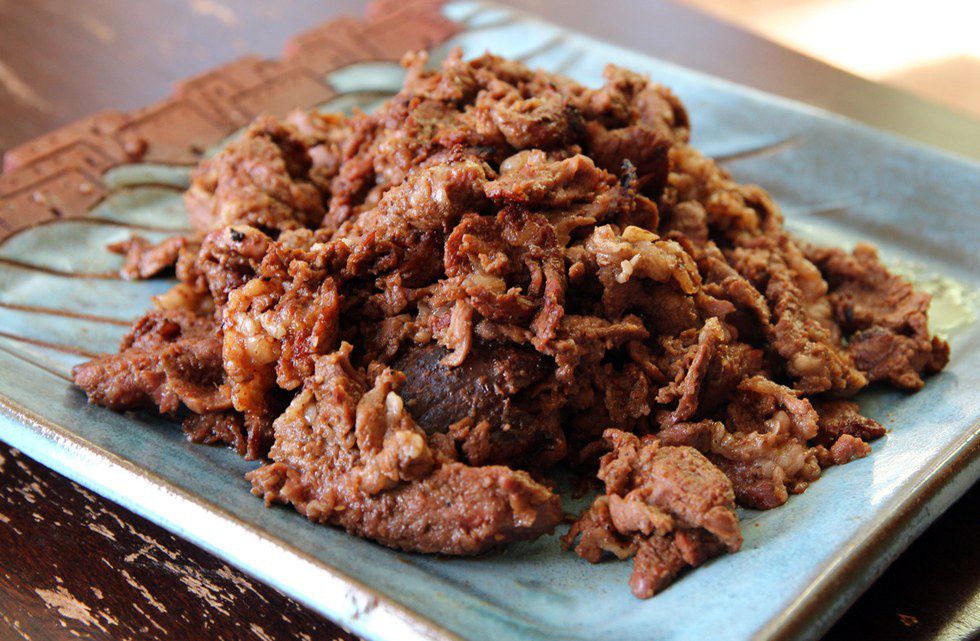
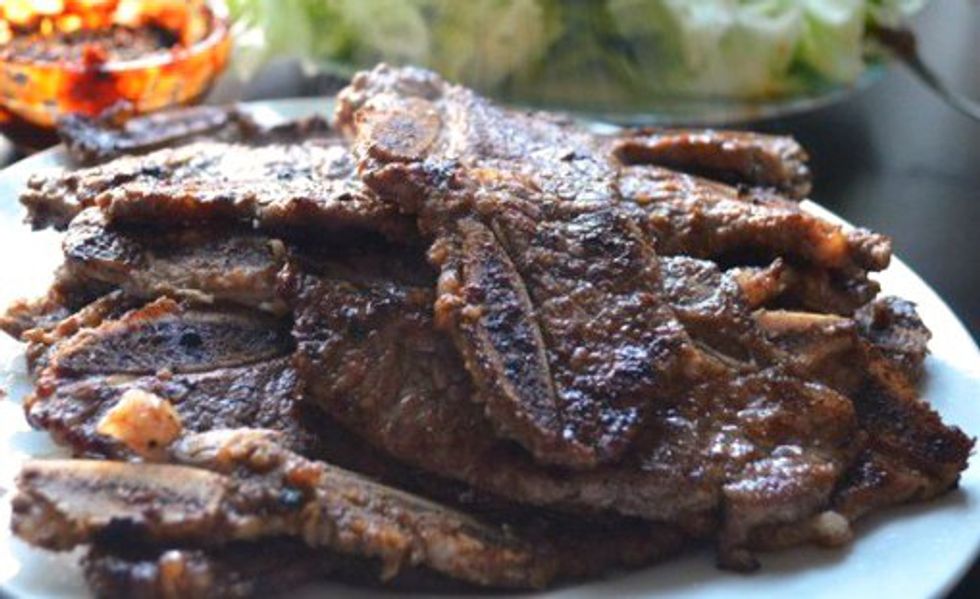

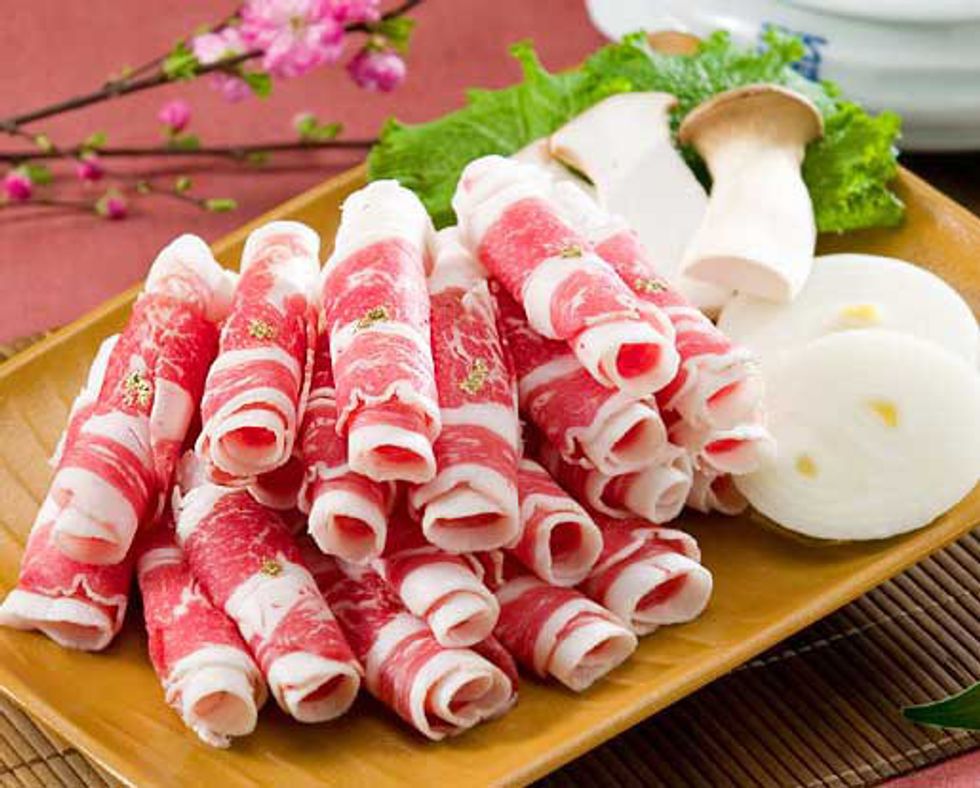
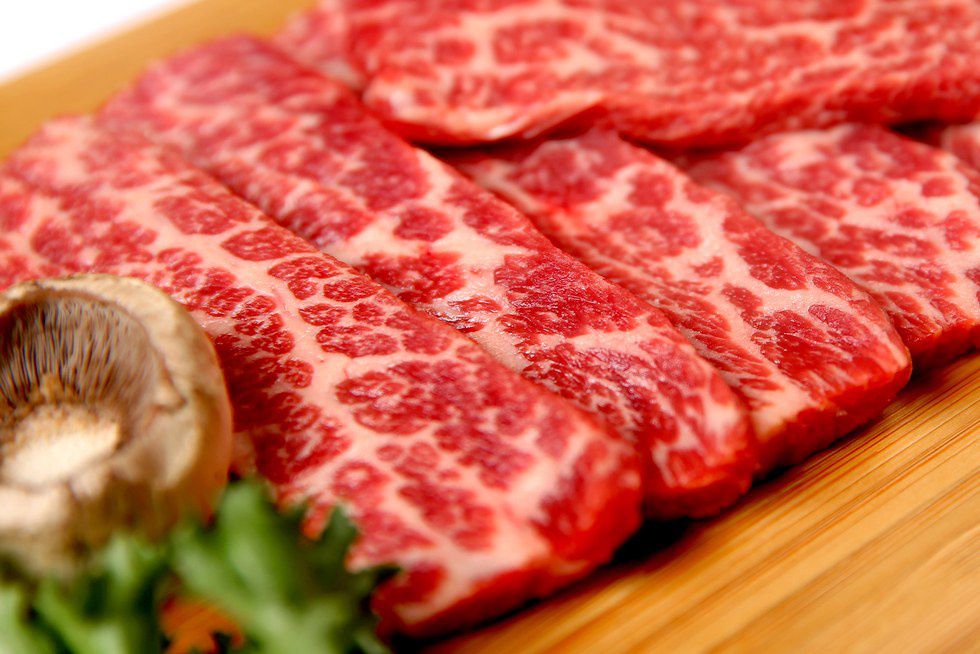
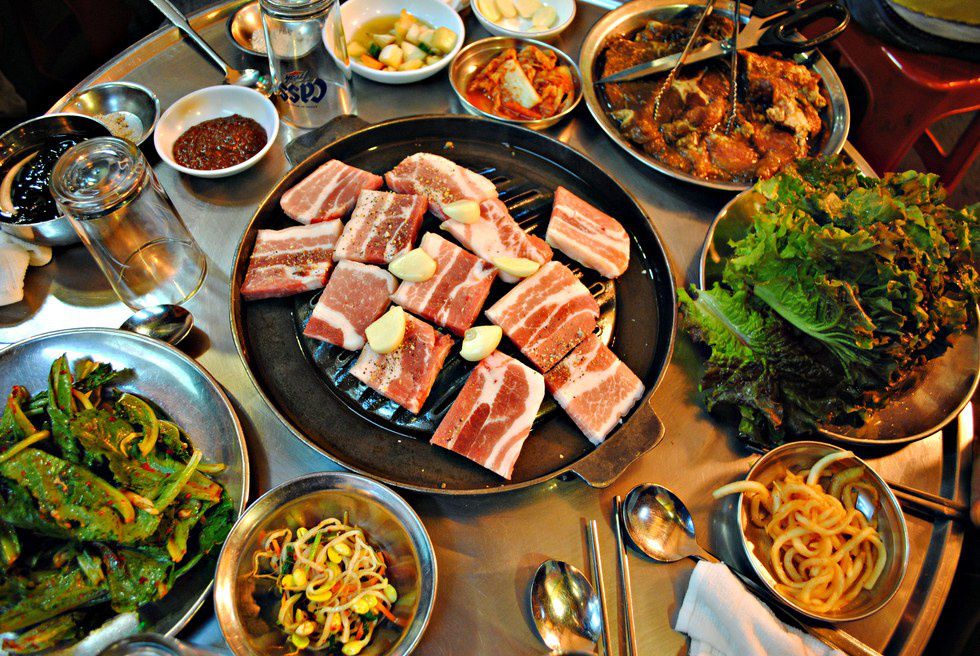


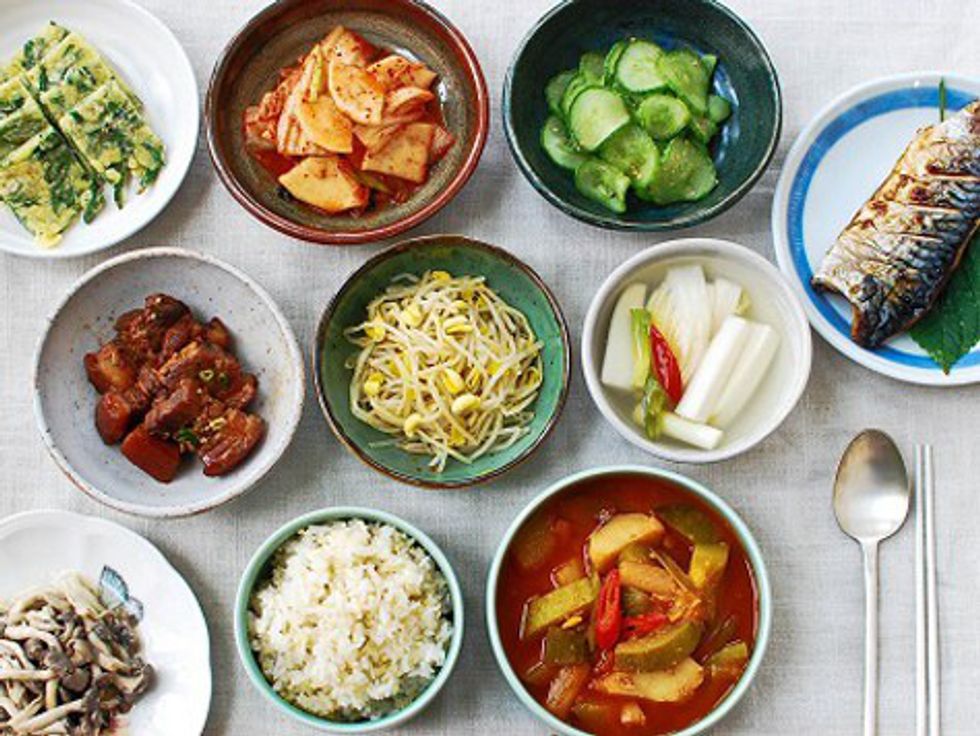









 Photo by
Photo by 








